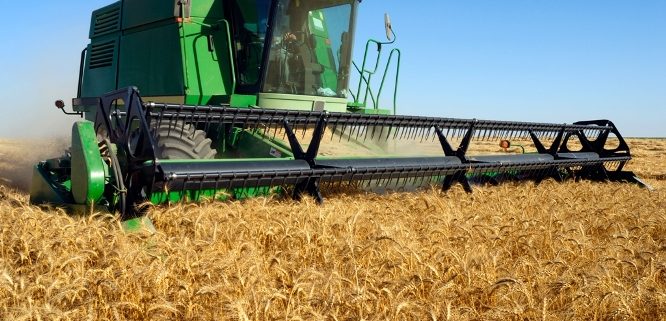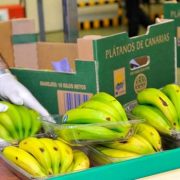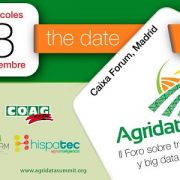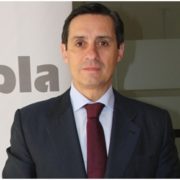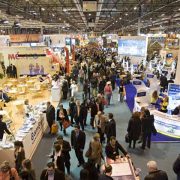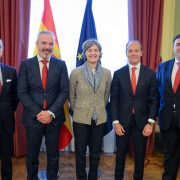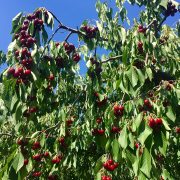Spain launches campaign to request direct aid from the CAP
Since 1st February, the campaign has begun which will allow some 795,000 farmers to submit, until 30 April, the single application for direct aid from the Common Agricultural Policy (CAP) for 2017. The total result amounting to EUR 4,926 million, which may be paid in the form of advances from 1th October and the balance as from 1st December.
By means of the single application, the producer can request all their aid in one go, taking care of the correct fulfillment of the request and the deadlines to avoid possible penalties or even the exclusion of the aid system
As in previous campaigns, the single application must be addressed to the competent authority of the Autonomous Community in which the exploitation or most of the area of the same is located, and if there is no surface available, it will be presented in the Community Autonomous in which the largest number of animals is found.
The direct aid that can be requested is included in the Royal Decree approved at the end of 2014 on the application from that year of direct payments to agriculture and livestock. These standards describe the eligibility requirements for each aid and the minimum information that the single application must contain. The aids that can be requested in 2017 are the following:
1. Community aid schemes.
Basic payment to farmers (“basic payment scheme”);
Payment for farmers applying good agricultural practices for climate and the environment (“green payment”);
Supplementary payment for young farmers who start farming.
Scheme payment for small farmers
2. Specific aid schemes by area:
Specific payment for the cultivation of cotton.
3. Voluntary aid schemes in application of Article 52 of Regulation (EU) 1307/2013.
Support associated with rice cultivation
Support associated with protein crops
Aid associated with nuts and carob
Aid associated with quality legumes
Aid associated with sugar beet
Tomato aid for industry
Associated aid for farms holding suckler cows
Associated aid for bait farms.
Associated aid for dairy farms.
Associated aid for sheep farms.
Associated aid for goat farms.
Associated aid for dairy farmers who retained special rights in 2014 and do not have eligible hectares for the activation of basic payment entitlements.
Associated aid for bait cattle breeders who maintained special rights in 2014 and do not have eligible hectares for the activation of basic payment entitlements.
Associated aid for sheep and goat farmers who retained special rights in 2014 and do not have eligible hectares for the activation of basic payment entitlements.
For active and professional agriculture
In this campaign, just as it happened in 2015, in order to collect the aid, it will be required to comply with the concepts of the active farmer and of agricultural activity
Thus, those who receive the aid can not develop any of the activities not allowed in the legislation, such as managing a real estate or a company engaged in recreational activities, and, in addition, must actually assume the business risk of their exploitation and carry out an agricultural activity in the same. For this purpose, the competent authority should be allowed to consult the beneficiary’s tax information, indicating it in the application itself, or submitting the information required by the administration so that it can be verified.
As in the previous year, applications for the payment of rural development measures within the scope of the integrated administration and control system (basically area aid and livestock aid), the request for assignment of basic payment rights and the request for rights corresponding to the Basic Payment National Reserve. The latter is geared mainly towards young farmers and towards those producers who are incorporated into the agricultural activity and who have adequate training in the agricultural field.
As in 2016, holders who have been notified in 2015 who belong to the small farmers scheme and have not resigned, should apply, when submitting their single application, their ratification of participation in said regime and in on the basis of which they will only be required, in order to collect the aid, to maintain at least the same number of hectares as the number of basic payment entitlements allocated to them in the 2015 marketing year. Participants in this scheme have numerous advantages as regards the simplification of the formalities necessary to be able to collect the aid from the CAP.
Telematic access to SIGPAC
In order to facilitate the completion of the single application and taking into account that all the agricultural parcels of the farm, the Ministry of Agriculture and Fisheries, Food and Enviroment must be declared according to the Geographic Information System for Identification of Agricultural Parcels (SIGPAC) And Environment makes the necessary information available to applicants through access to SIGPAC through its website, the FEGA website or the Autonomous Communities.
In the event that the SIGPAC does not reflect the actual situation of the plots and if it is observed that the enclosures are not properly delimited, or if the use of any enclosure has been changed, the producer must notify the Administration through the timely allegation.
An enclosure whose delimitation, or other information registered in the SIGPAC is not true and coincides with reality, may result in a reduction of the requested aid, especially if it includes elements that are not eligible
As stated in Community legislation, and to avoid duplication in the declaration of plots, this year all holdings with more than 30 hectares will have to make the so-called “graphic declaration” of the Single Application. The competent authorities of the Autonomous Communities shall report on how to do so at the time the application is submitted.
In the year 2016, a total of 795,284 producers submitted the single application
Technical modifications in the regulations
On December 31st, the Royal Decree was published amending the regulations in force for direct aid from the 2017 campaign, which introduces technical adjustments aimed at clarifying the legislation, which do not modify the Ministry’s commitment to the figure of the active farmer and by agricultural activity.
The control of producers’ fiscal data to verify that at least 20% of the agricultural tax amounts are obtained from the sale of products and the real agricultural activity has been maintained as it was in the previous rule, although it has been transferred from the articles corresponding to the active farmer to those that refer to the agricultural activity.
When cases of non-compliance are detected, as was already done in 2015 and 2016, this applicant can not be immediately excluded from aid, but should be included in a risk group, which will have to demonstrate that it actually exercises the agricultural activity In all its exploitation and assumes the business risk of the same.
The other changes consist mainly of measures aimed at facilitating the transfer of rights in cases of public intervention (land consolidation and expropriation), and small modifications included in the coupled aid, to encourage that the aid goes to those who actually carry out an agricultural activity .
Balance of payments of direct aid
The implementation of the reform of CAP direct aid in the year 2015 has been successfully concluded in Spain, despite the difficulties resulting from the change in Community legislation. In this way, more than 99.2% of the aid established in that campaign has been paid, and in the coming months small payments pending without any kind of penalty for the farmer or the country can be paid.
This places Spain as one of the most efficient countries in the payment of the aid derived from the reform, since the average in the European Union is located in the 97.7% of payments in that campaign.
The commitment to the figures of the active farmer and the agrarian activity has meant that from a total of 915,294 applicants for aid in 2013, a total of 795,284 in 2016, which means a drop of about 120,000 applicants (more than one 13%), which has allowed aid to be concentrated in the most active and professional farmers.
In the framework of the 2016 campaign, 76% of the direct aid has already been paid, which has meant the payment of more than 3,726 million euros until now. Until June 30, pending payments will be made
In relation to the 2016 campaign, it is worth mentioning the great effort made by the Ministry and the Autonomous Communities so that, as requested by the farmers, a considerable amount of advances could be paid between October 16 and December 1. Thus, in that period in Spain have been paid 2,375 million euros, accounting for about 48% of the total payments of the campaign compared to an average of the European Union of 27%.
Source: MAPAMA




